Terminology & Notation
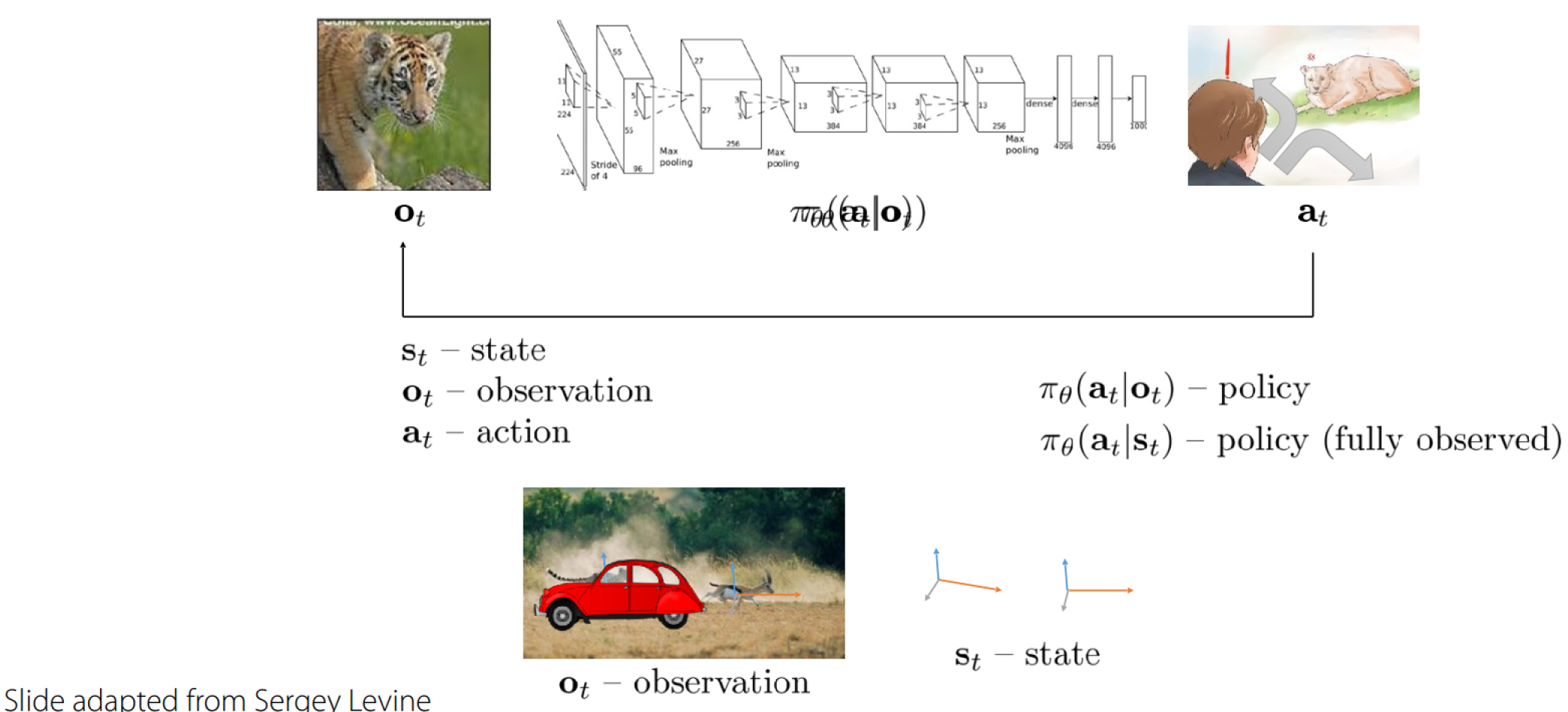
Use the reward function to determine which action is better or worse.
define Markov decision process.
The Goal of Reinforcement Learning
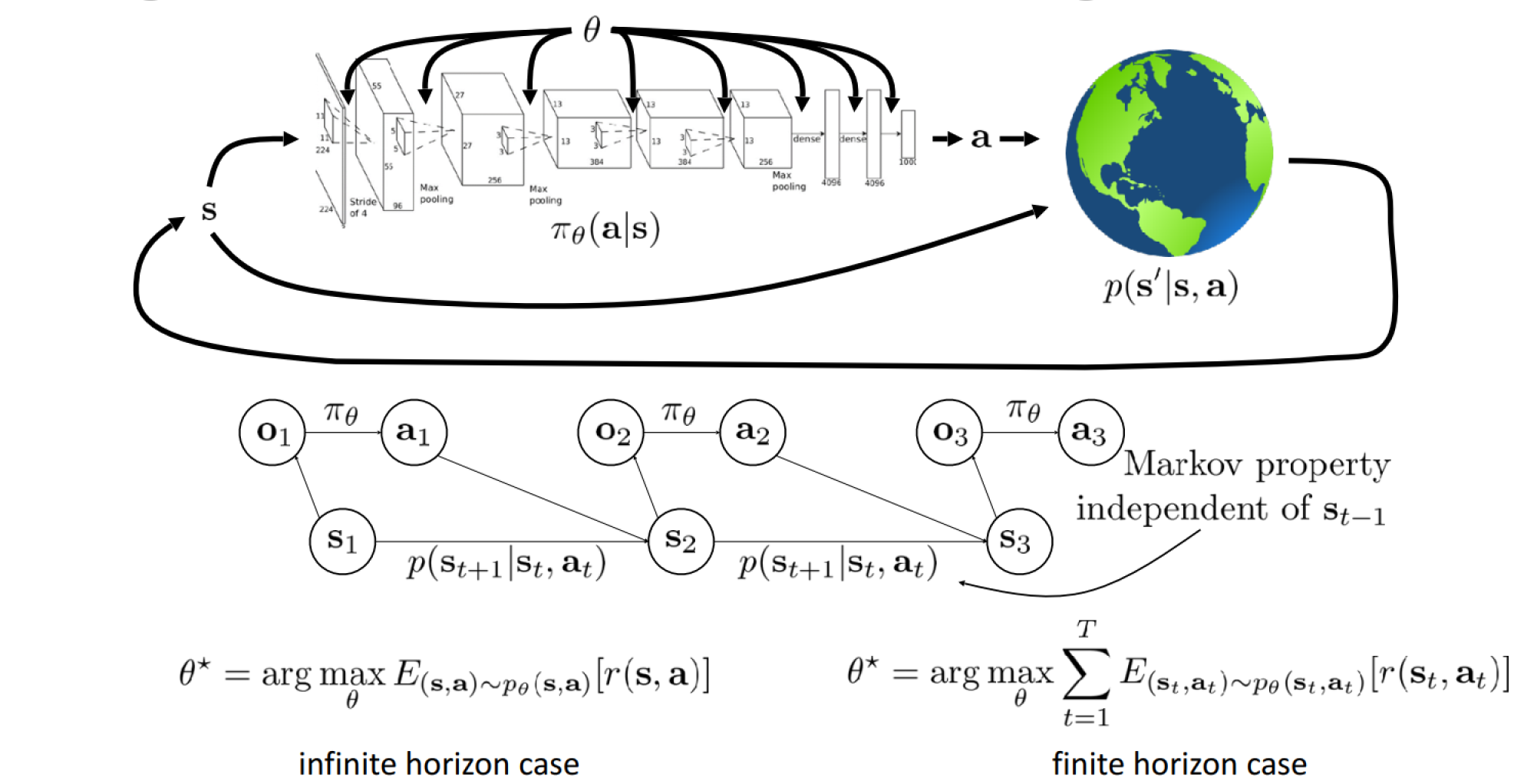
What is a Reinforcement Learning Task
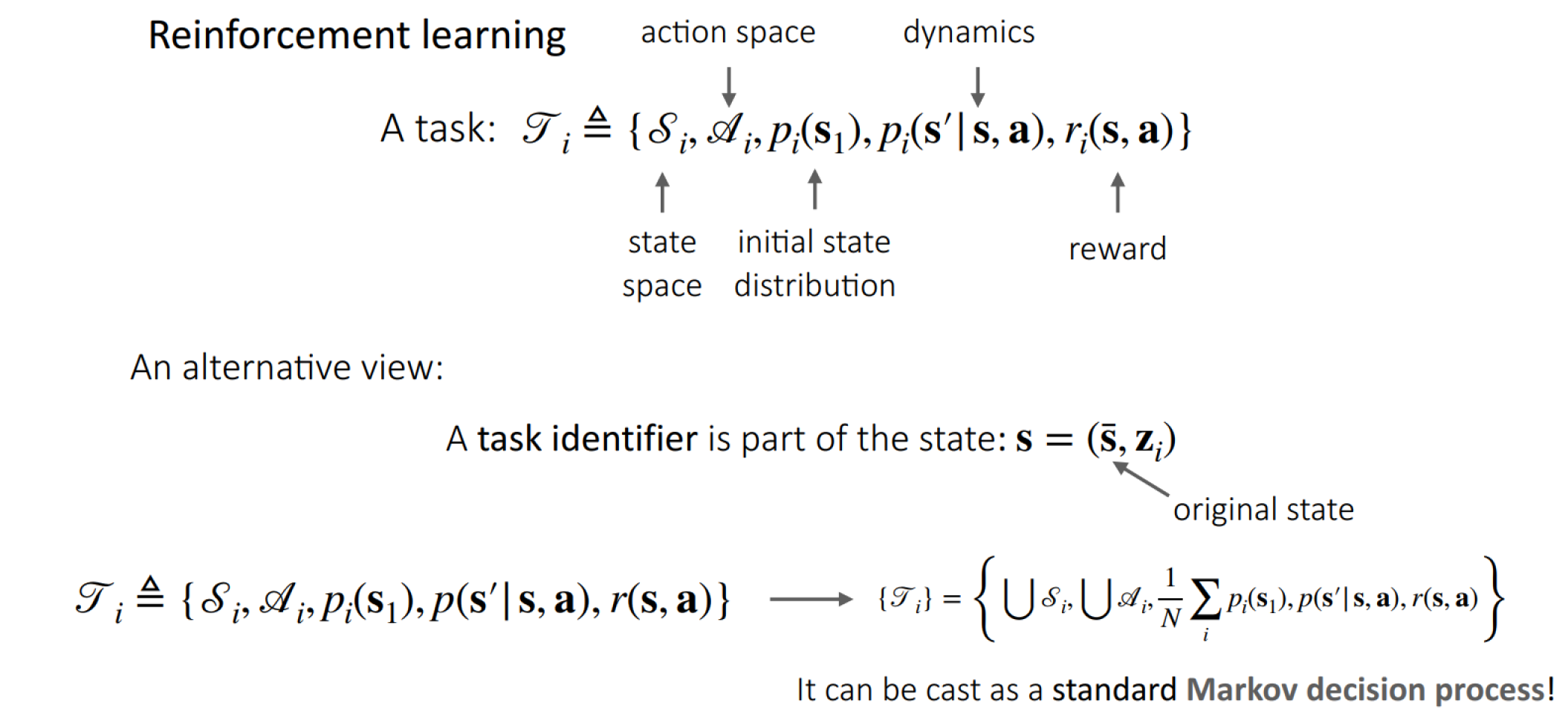
The Goal of Multi-Task Reinforcement Learning
Multi-task RL
The same as before, except a task identifier is part of the state: , e.g. one-hot task ID, language description, desired goal state, which is goal-conditioned RL.
The reward is the same as before, or for goal-conditioned RL:
Distance function examples:
- Euclidean
- Sparse 0/1
The Anatomy of a RL Algorithm
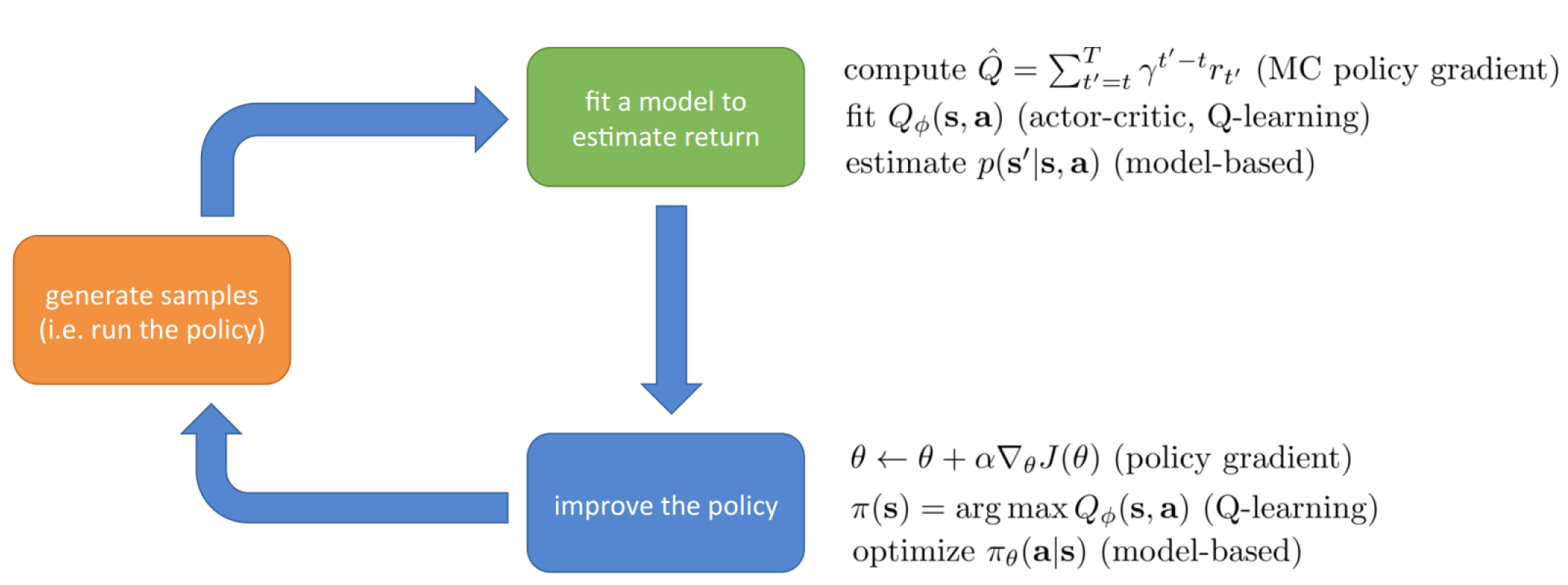
Evaluating the Objective
Sum over samples from .
Direct Policy Differentiation
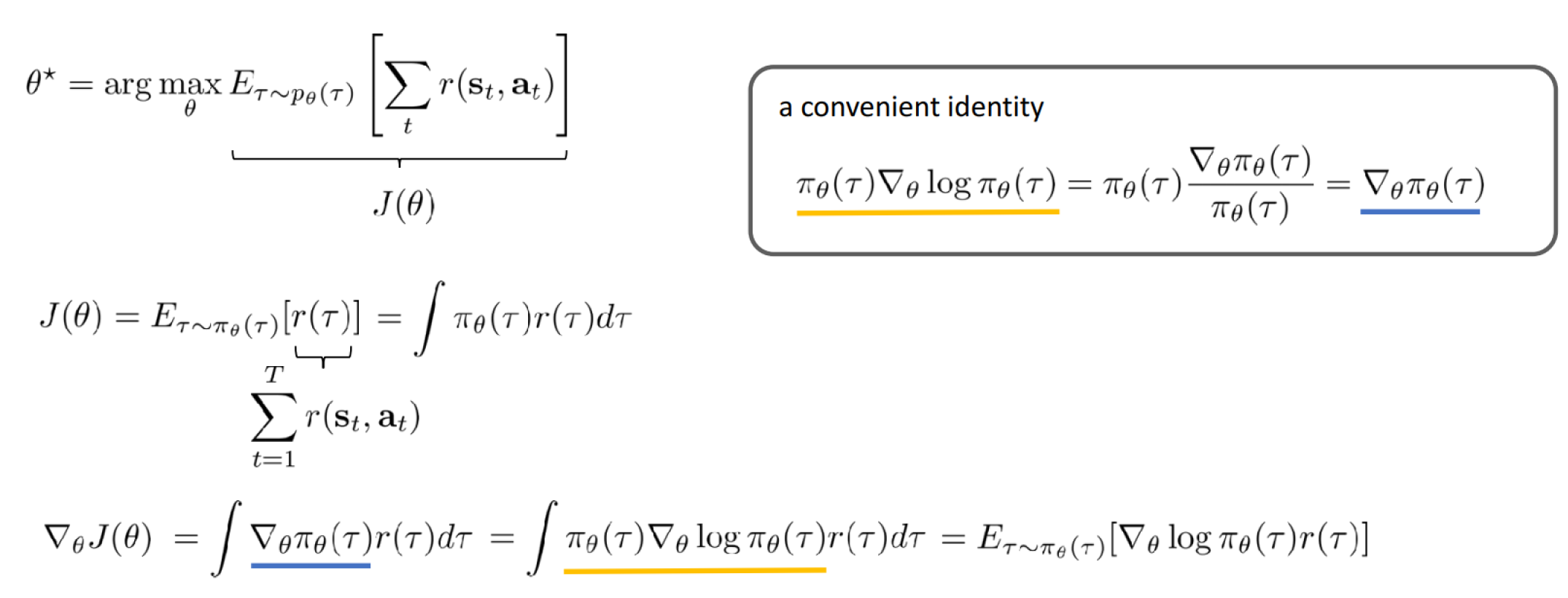
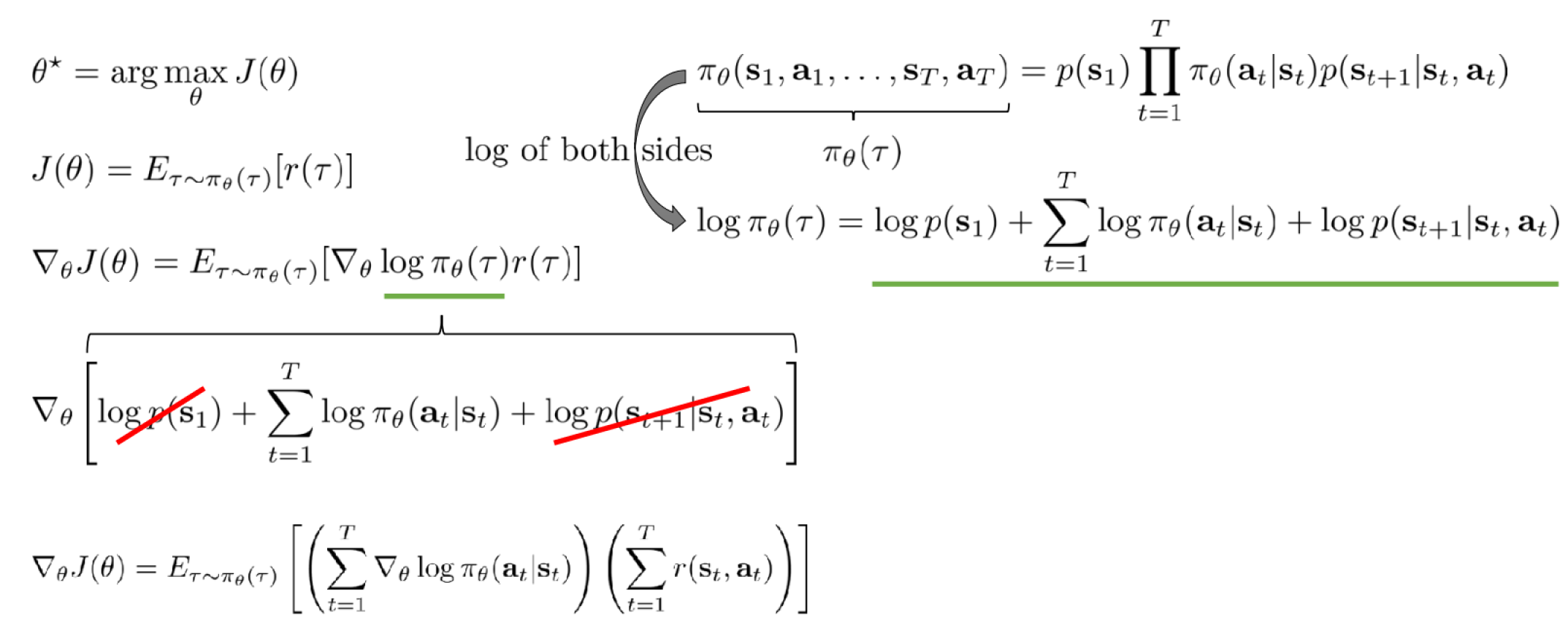
Evaluating the Policy Gradient
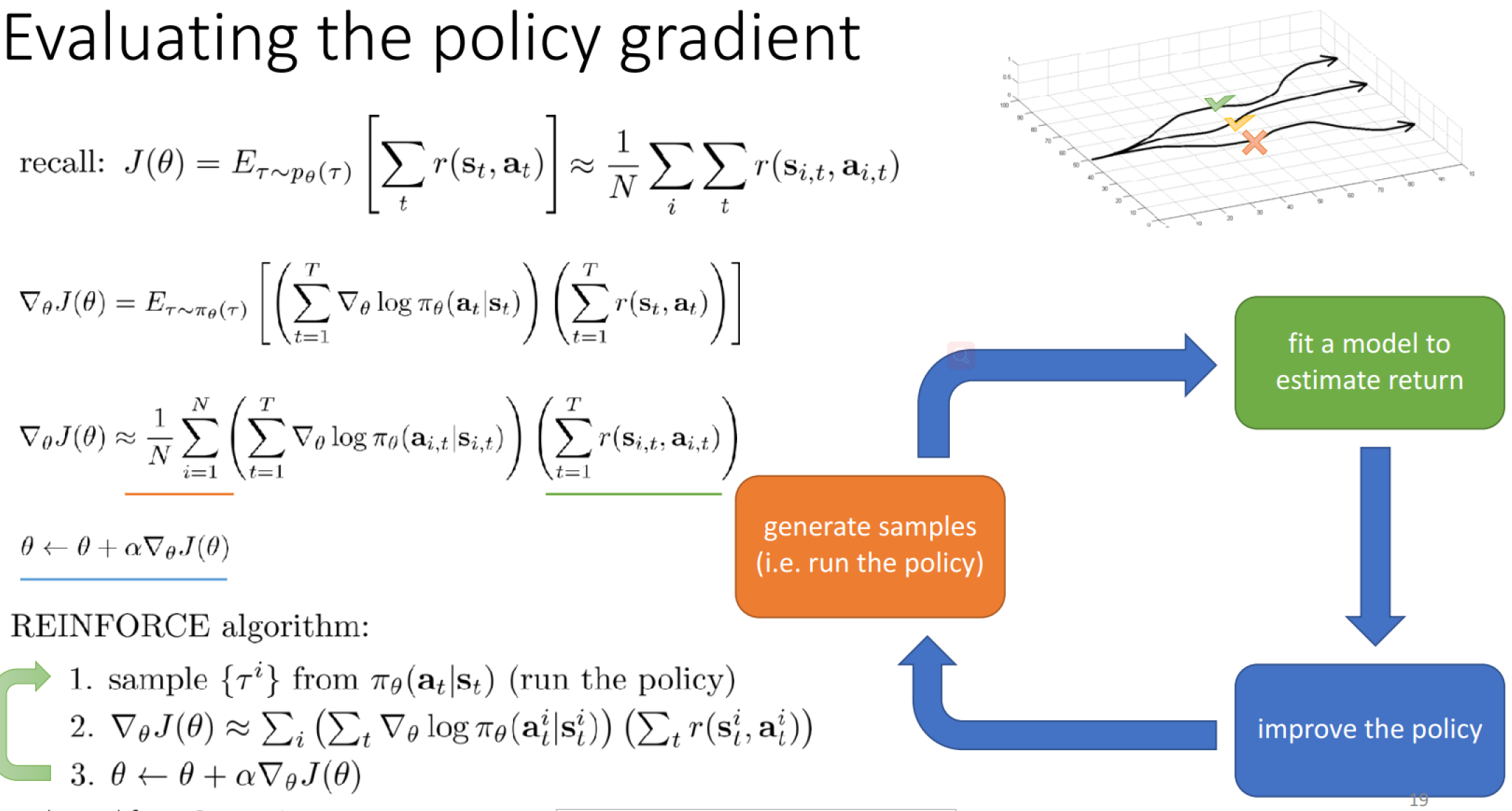
Comparison to Maximum Likelihood
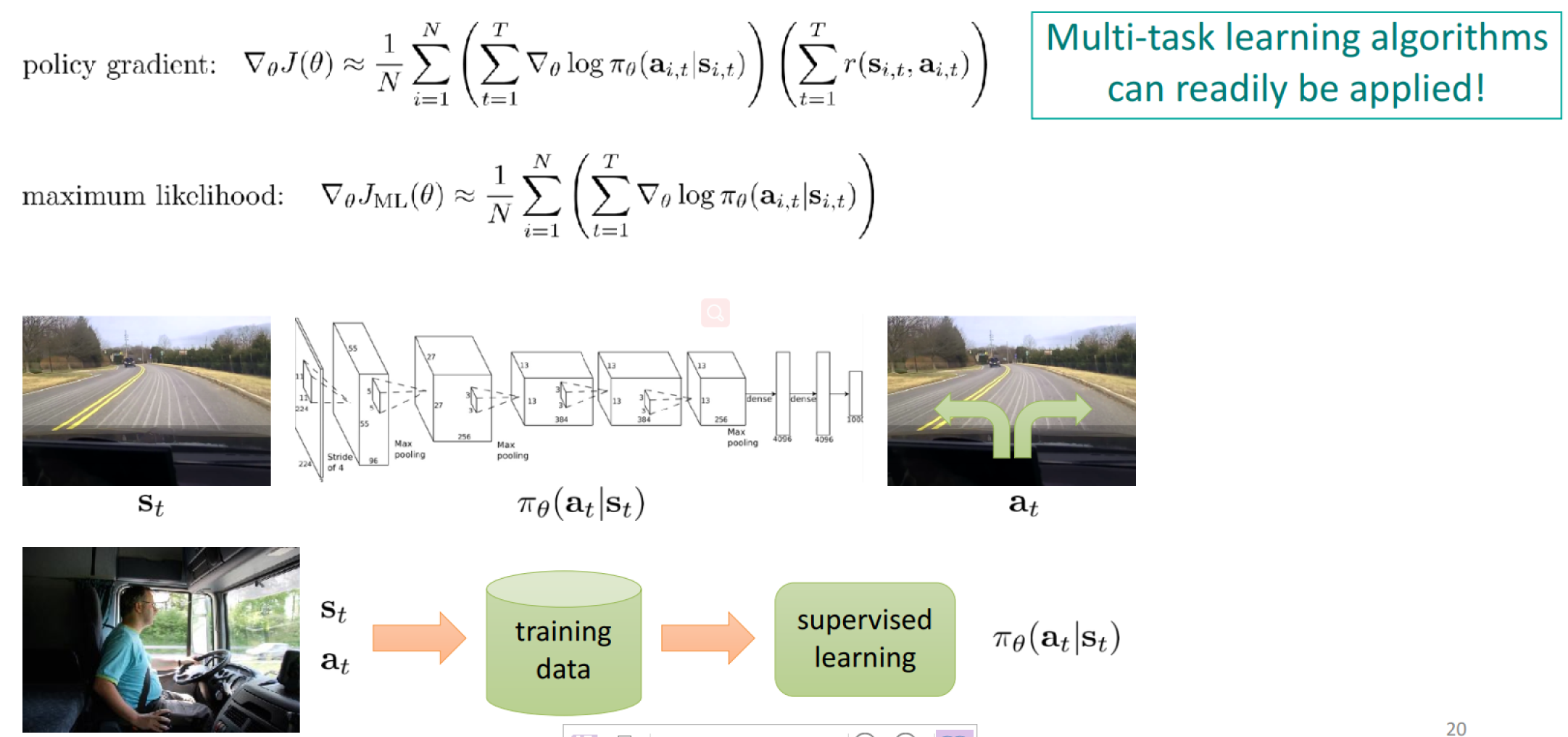
Which means:
- Good stuff is made more likely
- Bad stuff is made less likely
- Simply formalizes the notion of “trail and error”
Summary for Policy Gradients
Pros:
- Simple
- Easy to combine with existing multi-task & meta-learning algorithms.
Cons:
- Produces a high0-variance gradient
- Can be mitigated with baselines (used byu all algorithms in practice), trust regions
- Requires on-policy data
- Cannot reuse existing experience to estimate the gradient
- Importance weights can help, but also high variance
Q-Learning
Value-Based RL: Definitions
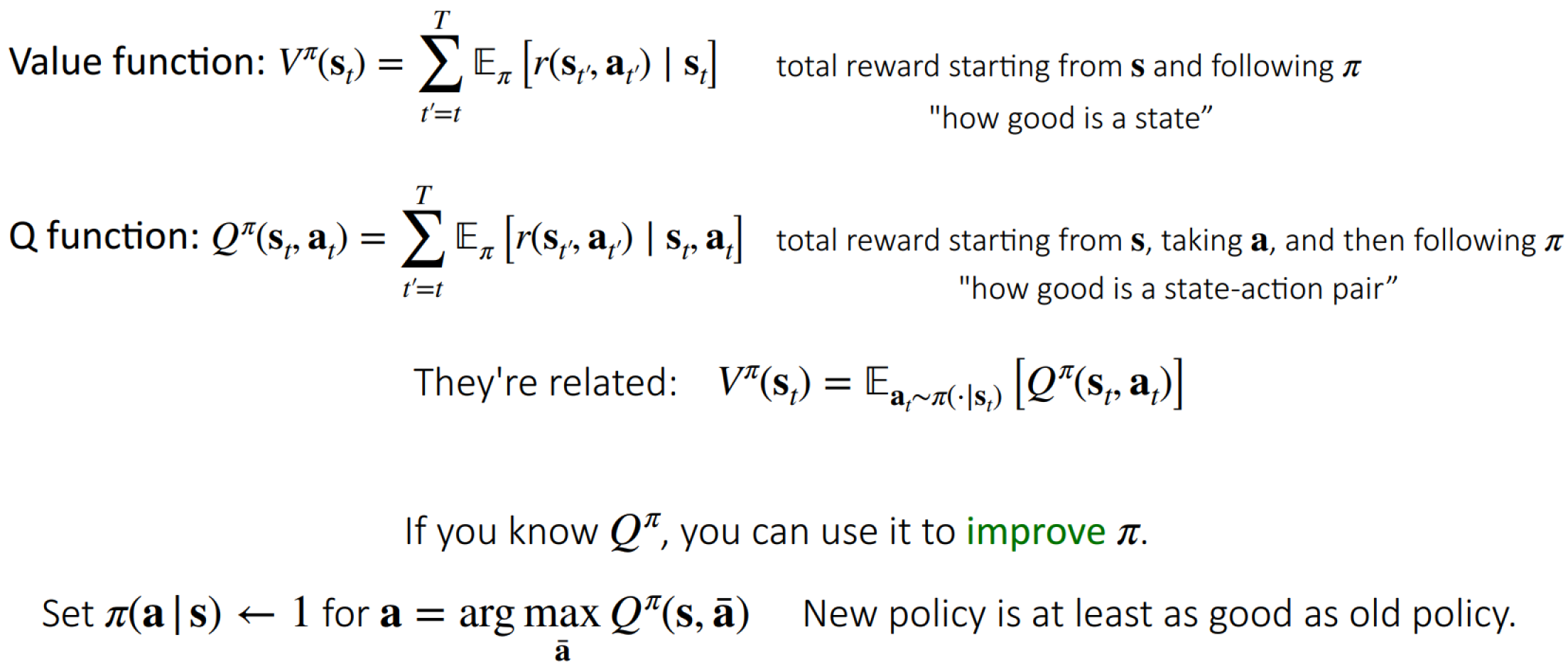
For the optimal policy , it follows the bellman equation:
Q^(s_t, a_t) = E_{s\prime \sim p(\cdot |s,a)} \left [ r(s,a) + \gamma \max_{a\prime} Q^ (s\prime, a\prime) \right ]
Fitted Q-iteration Algorithm
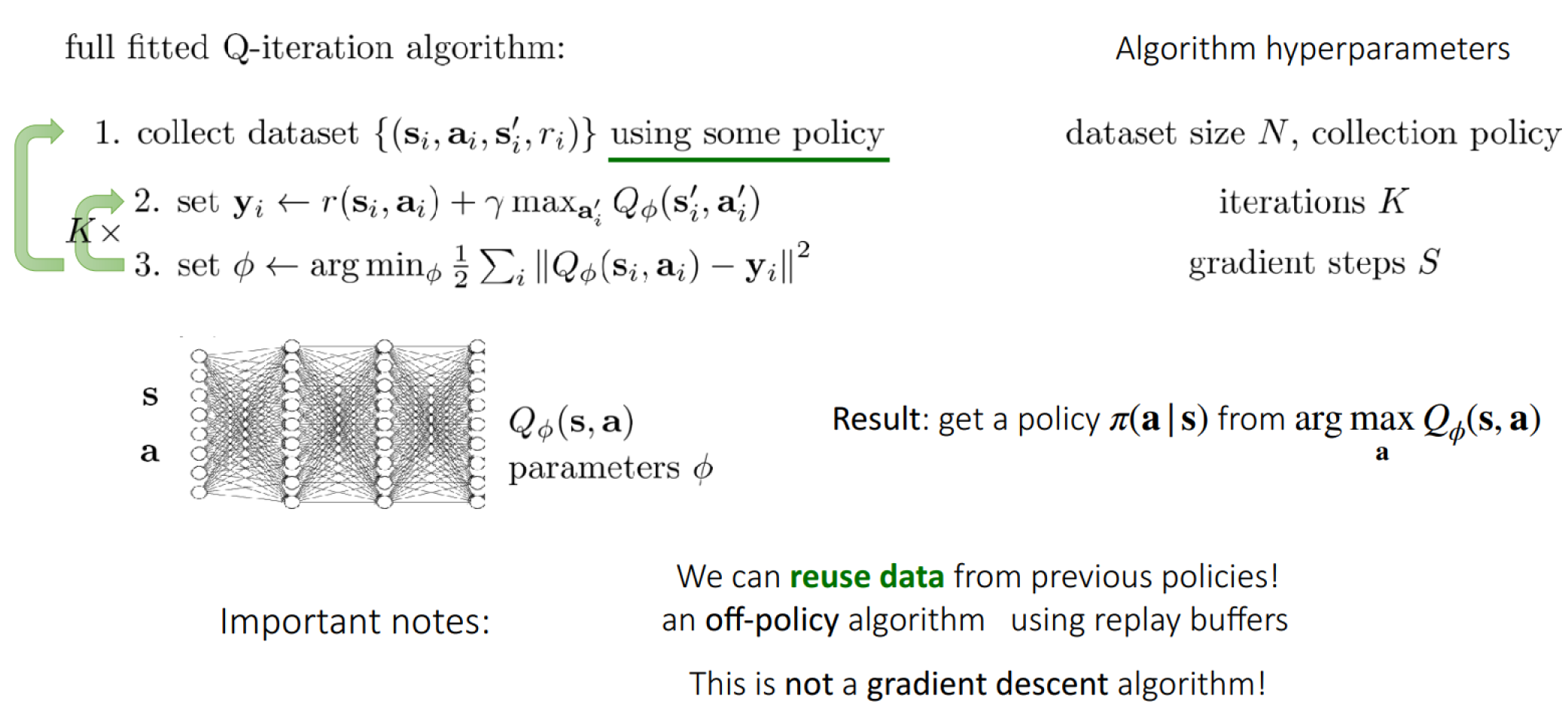
Multi-Task Q-Learning
Policy:
Q-function:
Analogous to multi-task supervised learning: stratifies sampling, soft/hard weight sharing, etc.
The different about RL:
- The data distribution is controlled by the agent
- You may know what aspect(s) of the MDP are changing across tasks
Goal-conditioned RL with Hindsight Relabeling
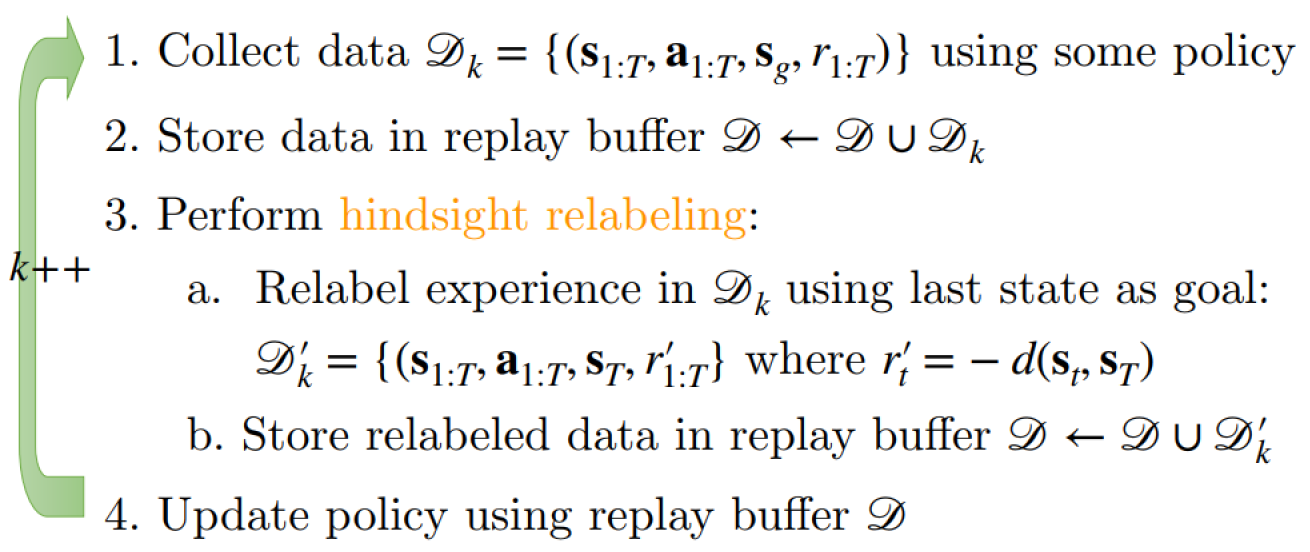
Relabeling Strategies: Use any state from the trajectory.
The result is the exploration challenges alleviated, see more: Hindsight Experience Replay
Multi-task RL with Relabeling
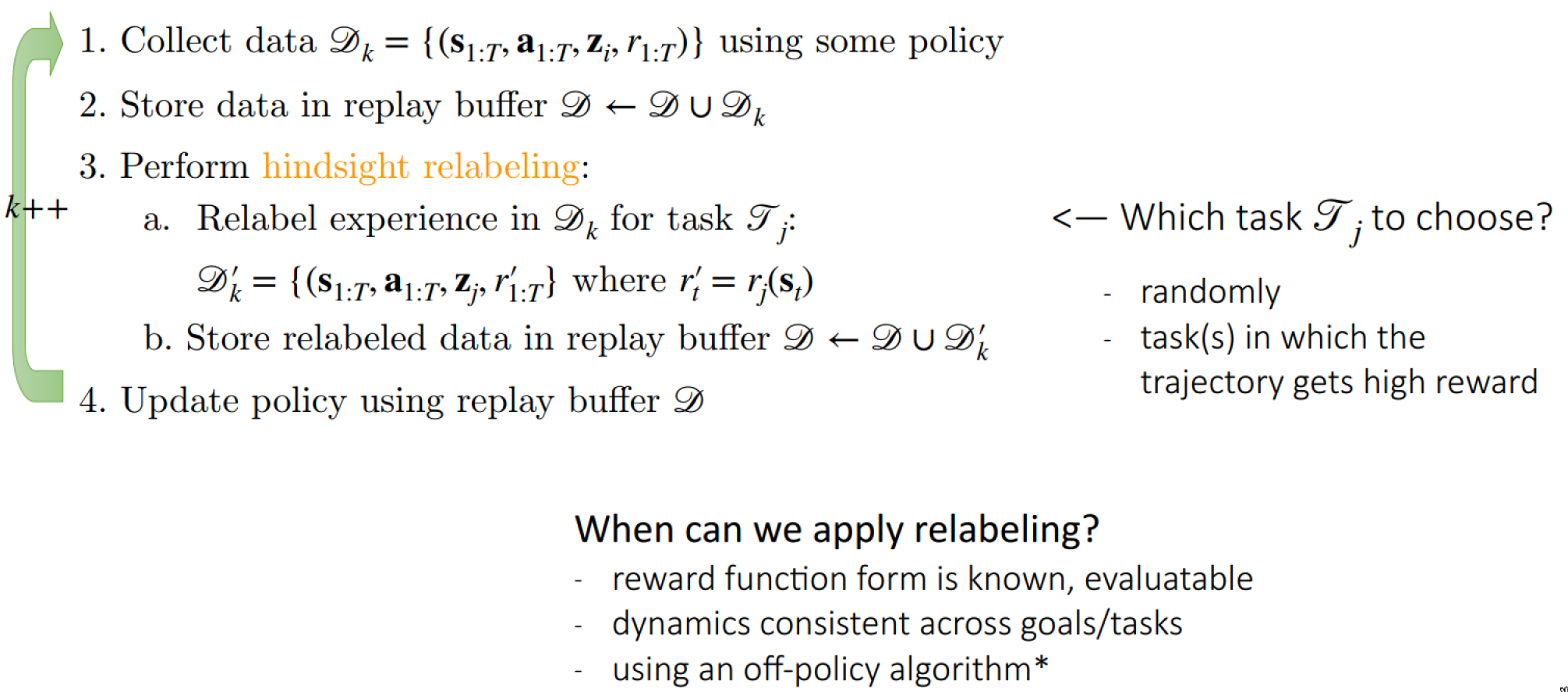
随机未标记的交互作用在达到最后一个状态的0/1奖励下是最优的。

Unsupervised Visuo-motor Control through Distributional Planning Networks
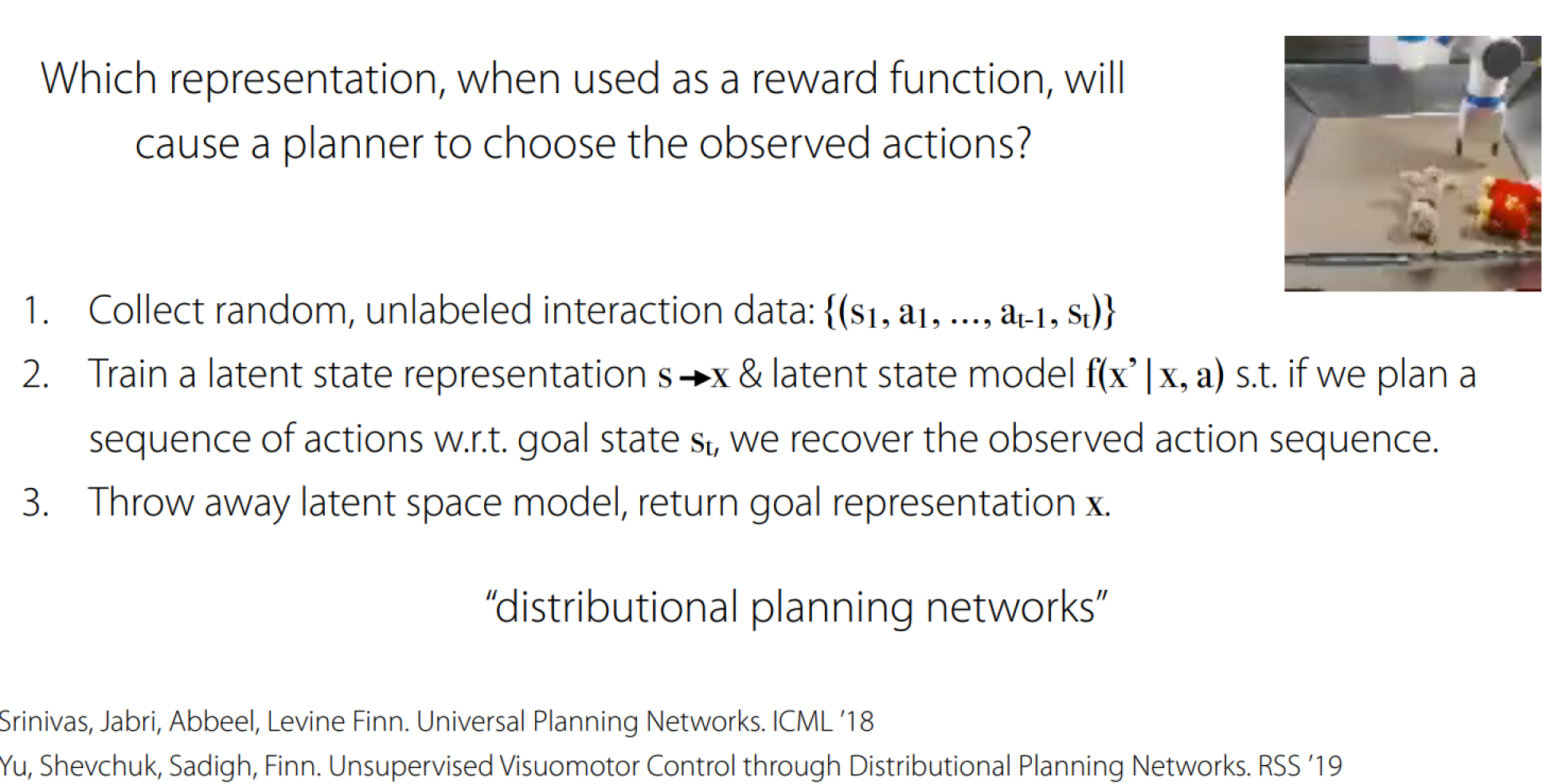
Note: Cover Picture
